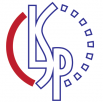CLIPSyntel: CLIP and LLM Synergy for Multimodal Question Summarization in Healthcare
In the era of modern healthcare, swiftly generating medical question summaries is crucial for informed and timely patient care. Despite the increasing complexity and volume of medical data, existing studies have focused solely on text-based summarization, neglecting the integration of visual information. Recognizing the untapped potential of combining textual queries with visual representations of medical conditions, we introduce the Multimodal Medical Question Summarization (MMQS) Dataset. This dataset, a major contribution to our work, pairs medical queries with visual aids, facilitating a richer and more nuanced understanding of patient needs. We also propose a framework, utilizing the power of Contrastive Language Image Pretraining(CLIP) and Large Language Models(LLMs), consisting of four modules that identify medical disorders, generate relevant context, filter medical concepts, and craft visually aware summaries. Our comprehensive framework harnesses the power of CLIP, a multimodal foundation model, and various general-purpose LLMs, comprising four main modules: the medical disorder identification module, the relevant context generation module, the context filtration module for distilling relevant medical concepts and knowledge, and finally, a general-purpose LLM to generate visually aware medical question summaries. Leveraging our MMQS dataset, we showcase how visual cues from images enhance the generation of medically nuanced summaries. This multimodal approach not only enhances the decision-making process in healthcare but also fosters a more nuanced understanding of patient queries, laying the groundwork for future research in personalized and responsive medical care




